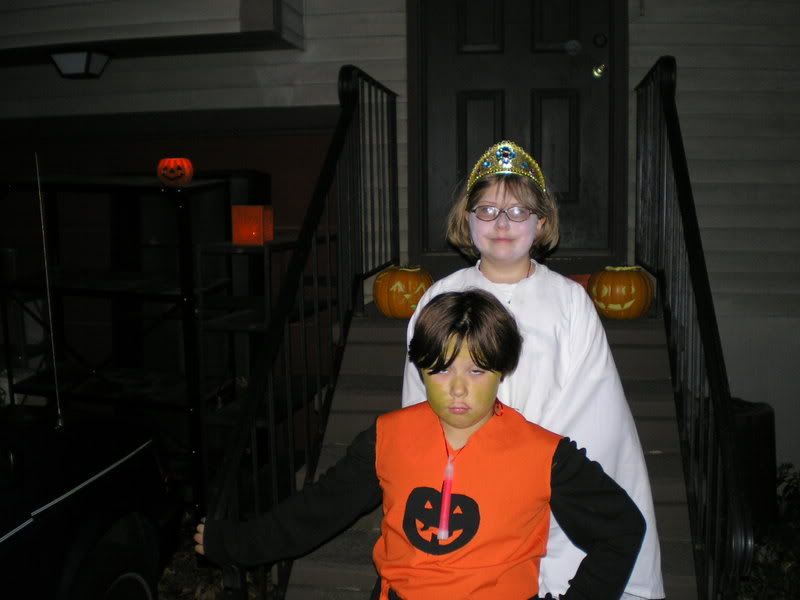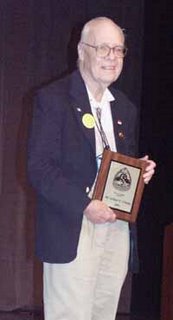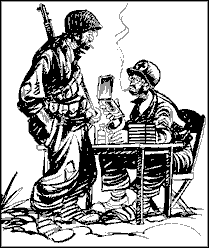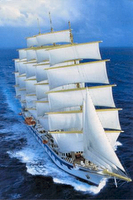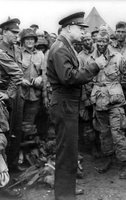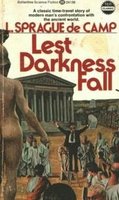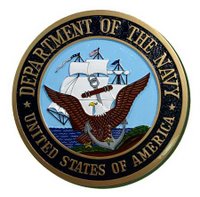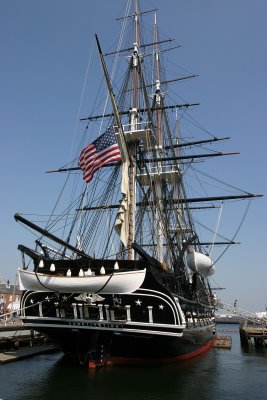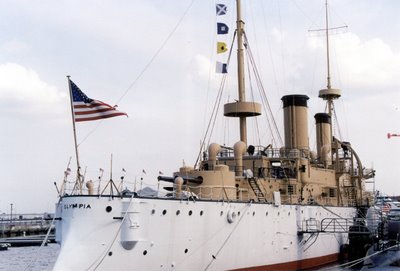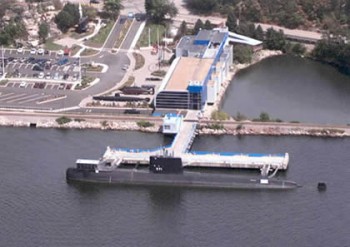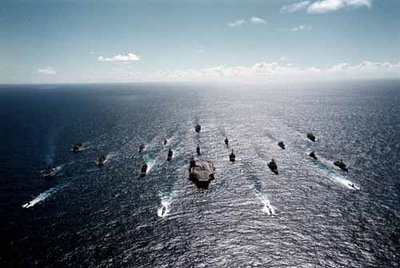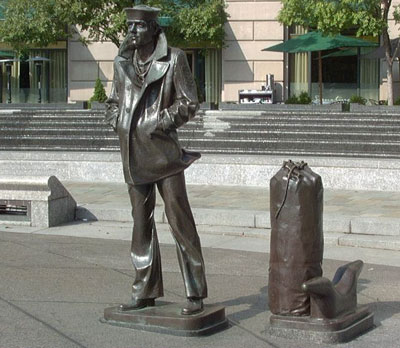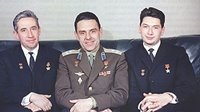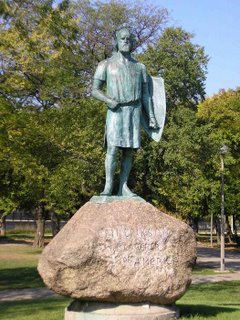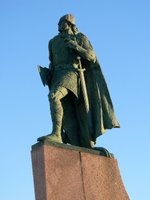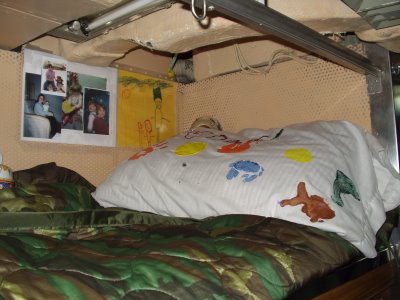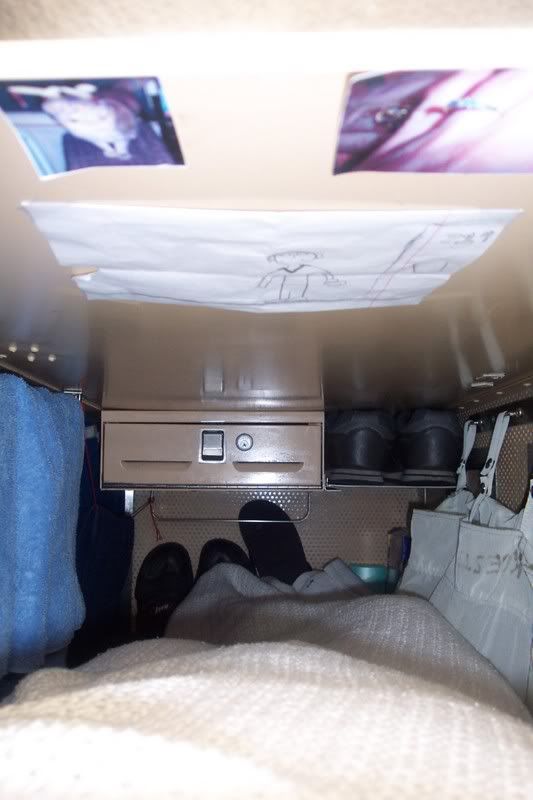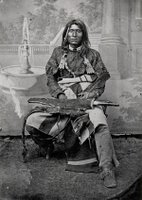A brief note of explanation first, for those readers who aren't familiar with Navy terminology. The word "log" has two basic meanings
* for sailors. The first is "a record of things or events." For instance, a roving watch will make periodic tours of his space, noting gauge readings and other things and writing them down; this is a log (and the action of recording the gauge readings is called "logging"). The Quartermaster of the Watch keeps a record of every speed, course and depth order the Officer of the Deck gives to the Helmsman, and the time said orders are given; this is also a log. Such logs are reviewed every few hours by senior personnel, to ensure that things are being recorded properly and that no dangerous trends (such as a system pressure going steadily higher and higher) go unnoticed.
The second meaning is "the ship's speedometer." I won't go into the history of why it's called a "log"
**, but in olden times it consisted of a man throwing a piece of wood attached to a length of line into the water ("heaving the log"). Nowadays, it's an electromechanical device called, for some reason, the "electromechanical log" ("EM log," for short). Got that?
Another thing: Sailors reporting to their boat go through a lengthy process called qualification, in which they learn everything they can about not only their own job but also everyone else's, so that they can be of maximum effectiveness in the case of a casualty. This is a requirement, not an option; sailors who fail to qualify get thrown off the boat, to go to the surface fleet. And so each man's qual progress is also thoroughly monitored.
So.
Late one night, under way on the
Oly, I'm loitering in Control shooting the breeze with SK1, who is the on-watch COW. The Messenger of the Watch is a young man whom we'll call Bill, mainly because that's his real name (though I haven't the faintest idea what the rest of it was). And during a lull in the conversation, SK1 turns to young Bill and says, "Where's the EM log?"
"I don't know," says Bill.
"You don't know??"
"No. What is it?"
Mistake. Big mistake. Bill should be much farther along in his quals than that. SK1 looks at him for a moment, then says, "Well, go find it. The Officer of the Deck and I have to review it."
"Where should I look for it?"
"Try Maneuvering." (This is the small space back in the engine room where the people who are operating the power plant are stationed.)
So off Bill goes, out the aft door to Control. And as soon as he's out of sight, SK1 grabs the phone and whoops Maneuvering to let them know what's going on.
We found out later that what had happened back in the Engine Room went something like this: Bill arrives at Maneuvering, requests and is granted permission to enter, and tells the EOOW that he was sent back to get the EM log for the COW and the OOD.
"We don't have it," the EOOW says.
"Who does?"
Someone suggests that the ERS might have it down in lower level. While Bill is en route, of course, Maneuvering whoops the Lower Level Watch to warn him.
Lower Level Watch says he hasn't seen the ERS, but he thinks the EWS has the EM log in upper level, near the starboard TG. So Bill goes off to upper level, preceded by a telephoned warning, and sure enough, the EWS is by the starboard TG. (Which, coincidentally, is just a few yards from Maneuvering.)
The EWS tells Bill that he'd heard about his quest, and had therefore dropped the log off in Maneuvering so he could pick it up. The people in Maneuvering look at Bill in surprise and say, "Oh, are you still here? We thought you'd gone forward, so we had someone take it up to Control."
So eventually Bill shows up in Control and tells SK1 that he was told the log was already there.
"No," says SK1, "I haven't seen it." He thinks a bit, then says, "Maybe the XO has it. Go look in his stateroom."
"Look in his stateroom?" Bill asks.
"Look in his stateroom. Just open the door quietly and look to see if it's on his desk. And whatever you do,
don't wake him up."
It should be noted that this particular XO, when he went to bed, hung a sign on his door: DANGER - SLEEPING DRAGON. And meant it.
So off Bill goes, through the forward door to Control. And back he comes, a couple minutes later, to announce, "He says he doesn't have it."
He says he doesn't have it. The rest of us are still considering the connotations of that phrase when the forward door to Control opens again, and the XO walks in. He looks at the OOD, then at SK1, and mildly - to our surprise - says, "All right, guys. I know what you're trying to do, and I appreciate the humour - but next time, do it in the daytime!"
Nubs....
* Three, I suppose, if you count Seabees, who probably use that word to describe a large chunk of tree.
** If you're curious, you can look it up here.
 Someone came up with the idea of having the kids in my daughter's third-grade class come to school dressed as characters from their favourite books (bringing the books to share). Her current favourites are the Judy Moody series, by Megan McDonald, so she used the cover of Judy Moody, MD as a guide - t-shirt, pants, one of my shirts as a smock, and a nametag paper-clipped to her pocket.
Someone came up with the idea of having the kids in my daughter's third-grade class come to school dressed as characters from their favourite books (bringing the books to share). Her current favourites are the Judy Moody series, by Megan McDonald, so she used the cover of Judy Moody, MD as a guide - t-shirt, pants, one of my shirts as a smock, and a nametag paper-clipped to her pocket. That was just the school costume, though. For trick-or-treating she took inspiration from a tv programme called Halloweentown High, and went as a ghoul cheerleader, complete with green face makeup.
That was just the school costume, though. For trick-or-treating she took inspiration from a tv programme called Halloweentown High, and went as a ghoul cheerleader, complete with green face makeup. Her older sister decided to be a ghost princess, so my wife made her a white t-tunic (with big, flowing sleeves to cover the cast on her broken arm), and she added white face makeup and a tiara.
Her older sister decided to be a ghost princess, so my wife made her a white t-tunic (with big, flowing sleeves to cover the cast on her broken arm), and she added white face makeup and a tiara.